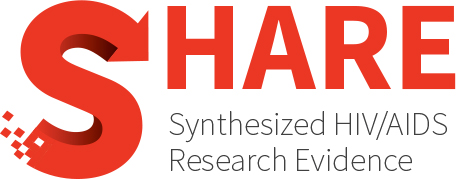Category Archives: Engagement and Care Cascade
Assessing the impact of digital communication tools on oral PrEP adherence: A systematic review and meta-analysis
This systematic review and meta-analysis evaluated the effect of digital communication tools (e.g., text message reminders) on improving daily oral HIV pre-exposure prophylaxis (PrEP) adherence. Searching PubMed, Embase, Web of...
Magnitude and characteristics of unsuppressed HIV viral load in children and adolescents on antiretroviral therapy in sub-Saharan Africa: A systematic review and meta-analysis
Background: HIV/AIDS remains a major health issue in sub-Saharan Africa, especially among children and adolescents, with a substantial proportion of people with HIV having unsuppressed viral loads despite the availability of...
Late diagnosis of human immunodeficiency virus (HIV) and its associated factors in Asian countries: A systematic review
Background: Despite widespread public health interventions and research on Human Immunodeficiency Virus (HIV), late diagnosis and presentation into care constitute serious challenges to effective prevention and control of the disease. Asia,...
Sexually transmitted and blood-borne infections in transgender and non-binary people in Canada: A scoping review
In the 2021 census, 100,815 people in Canada aged 15 and older identified as transgender or non-binary. Globally, transgender people are disproportionately burdened by several Sexually Transmitted and Blood-Borne Infections...
Morbidity and mortality risk among people with HIV and central or visceral adiposity: A targeted literature review
BACKGROUND: Given the known relationship between human immunodeficiency virus (HIV), antiretroviral therapies, and excess visceral adipose tissue (VAT), this review sought to characterize risk of negative health outcomes associated with...
Mental health interventions for young pepole living with HIV/AIDS in sub-Saharan Africa: A systematic review
Introduction: Young people (aged 15-24) living with HIV/AIDS (YPLHIV) in sub-Saharan Africa (SSA) experience higher rates of mental health conditions compared to their uninfected peers. Research and practitioners have expressed...
Effects of test-and-treat versus preexposure prophylaxis on elimination of HIV transmission: Analysis of 24 HIV prevention trials
INTRODUCTION: In 2023, 28.8 million (72%) of 39.9 million people with HIV (PWH) worldwide were on treatment with viral suppression, while 11.1 million (28%) people had viraemia with the risk...
Mapping the gut microbiota composition in the context of Raltegravir, dolutegravir, and bictegravir—A scoping review
(1) Background: Second-generation integrase strand transfer inhibitors (INSTIs) are now the preferred first-line therapies for human immunodeficiency virus (HIV). However, concerns regarding their side effects, such as weight gain and...
Association between baseline HIV-1 DNA levels and clinical outcomes in people living with HIV: A meta-analysis of cohort studies
This systematic review and meta-analysis evaluated the effect of digital communication tools (e.g., text message reminders) on improving daily oral HIV pre-exposure prophylaxis (PrEP) adherence. Searching PubMed, Embase, Web of...
Transition From adolescent to adult care for young people living with HIV: A systematic review of needs, barriers, and interventions
Young people living with HIV (YPLHIV) aged 15-24 years represent over 25% of new HIV infections globally. They face significant challenges in transitioning from pediatric to adult care. Despite guidelines...
Cabotegravir plus rilpivirine injection for virally suppressed persons with HIV-1 infection: A systematic review and meta-analysis of randomized controlled trials
Purpose: This study evaluated the efficacy and safety of cabotegravir/rilpivirine long-acting formulation compared to oral standard of care at 48 and 52 weeks. Method: We conducted an electronic search (2005-2024) across databases...
Pharmacokinetic adaptations in pregnancy: Implications for optimizing antiretroviral therapy in HIV-positive women
Pregnancy introduces significant physiological changes that alter the pharmacokinetics (PK) of antiretroviral therapy (ART), impacting its safety and efficacy in HIV-positive women. Optimizing ART during pregnancy is critical to maintaining...
